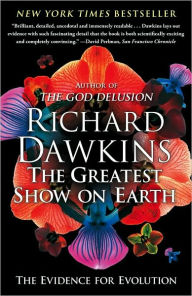The genome's been mapped.
But what does it mean?
Arguably the most significant scientific discovery of the new century, the mapping of the twenty-three pairs of chromosomes that make up the human genome raises almost as many questions as it answers. Questions that will profoundly impact the way we think about disease, about longevity, and about free will. Questions that will affect the rest of your life.
Genome offers extraordinary insight into the ramifications of this incredible breakthrough. By picking one newly discovered gene from each pair of chromosomes and telling its story, Matt Ridley recounts the history of our species and its ancestors from the dawn of life to the brink of future medicine. From Huntington's disease to cancer, from the applications of gene therapy to the horrors of eugenics, Matt Ridley probes the scientific, philosophical, and moral issues arising as a result of the mapping of the genome. It will help you understand what this scientific milestone means for you, for your children, and for humankind.
Read More
bn.com
This national bestseller is one of the most accessible and lively books available on the topic of the human genome. Taking each of the 23 chromosomes in turn, Matt Ridley, author of The Red Queen: Sex and the Evolution of Human Nature, tells stories of the genes and their meaning for us -- blending history, science, medicine, philosophy, and ethics.
Susan Okie
A superb writer whose exquisite, often moving descriptions of life's designs remind me of the best work of the late Lewis Thomas....He crafts some of the clearest explanations of complex biological processes that I have encountered. What's more, he captures their slippery beauty.
— Washington Post Book World
Ronald Bailey
Mr. Ridley provides not only a fascinating tour of the human genome but a persuasive argument against the skeptics of biotech research. If you want to catch a glimpse of the biotech century that is now dawning, and how it will make life better for us all, Genome is an excellent place to start.
— Wall Street Journal
Publishers Weekly - Publisher's Weekly
HSoon we'll know what's in our genes: next year, the Human Genome Project will have its first-draft map of our 23 chromosomes. Ridley (The Red Queen; The Origins of Virtue) anticipates the genomic news with an inventively constructed, riveting exposition of what we already know about the links between DNA and human life. His inviting prose proposes "to tell the story of the human genome... chromosome by chromosome, by picking a gene from each." That story begins with the basis of life on earth, the DNA-to-RNA-to-protein process (chapter one, "Life," and also chromosome one); the evolution of Homo sapiens (chromosome two, which emerged in early hominids when two ape chromosomes fused); and the discovery of genetic inheritance (which came about in part thanks to the odd ailment called alkaptonuria, carried on chromosome three). Some facts about your life depend entirely on a single gene--for example, whether you'll get the dreadful degenerative disease Huntington's chorea, and if so, at what age (chromosome four, hence chapter four: "Fate"). But most facts about you are products of pleiotropy, "multiple effects of multiple genes," plus the harder-to-study influences of culture and environment. (One asthma-related gene--but only one--hangs out on chromosome five.) The brilliant "whistle-stop tour of some... sites in the genome" passes through "Intelligence," language acquisition, embryology, aging, sex and memory before arriving at two among many bugbears surrounding human genetic mapping: the uses and abuses of genetic screening, and the ongoing debate on "genetic determinism" and free will. Ridley can explain with equal verve difficult moral issues, philosophical quandaries and technical biochemistry; he distinguishes facts from opinions well, and he's not shy about offering either. Among many recent books on genes, behavior and evolution, Ridley's is one of the most informative. It's also the most fun to read. Agent, Felicity Bryan. (Mar.) Copyright 2000 Cahners Business Information.
Library Journal
Written in 23 chapters corresponding to the 23 pairs of chromosomes comprising the human genome, this is an engrossing account of the genetic history of our species. Each chapter focuses on a newly discovered gene on each chromosome, tracing its genetic contribution to such areas as human intelligence, personality, sexual behavior, and susceptibility to disease. Ridley (The Red Queen: Sex and the Evolution of Human Nature) is a zoologist-turned-science writer. As the Human Genome Project nears completion (the first findings are expected to be released February 2000), this book will be particularly relevant to lay readers, providing insight into how far we have come and where we are heading in the understanding of our genetic heritage. Recommended for public and academic libraries.--Leila Fernandez, Steacie Science Lib., York Univ., Toronto Copyright 2000 Cahners Business Information.
Philip Kitcher
Genome is a splendid introduction to some important science. It deserves to attract a wide and enthusiastic readership...
—The Times Literary Supplement
Silver
[M]uch of Ridley's
remarkable book is focused on a higher plane of pure intellectual
discovery. It is a nearly jargon-free expedition that hops from one human
chromosome to the next (23 in all) in search of the most delightful stories.
Even practicing geneticists -- apt to view the genome as a boring research
tool -- will come away with a greater sense of wonder at the hidden
secrets in the text.
—The New York Times Book Review
Read More




















